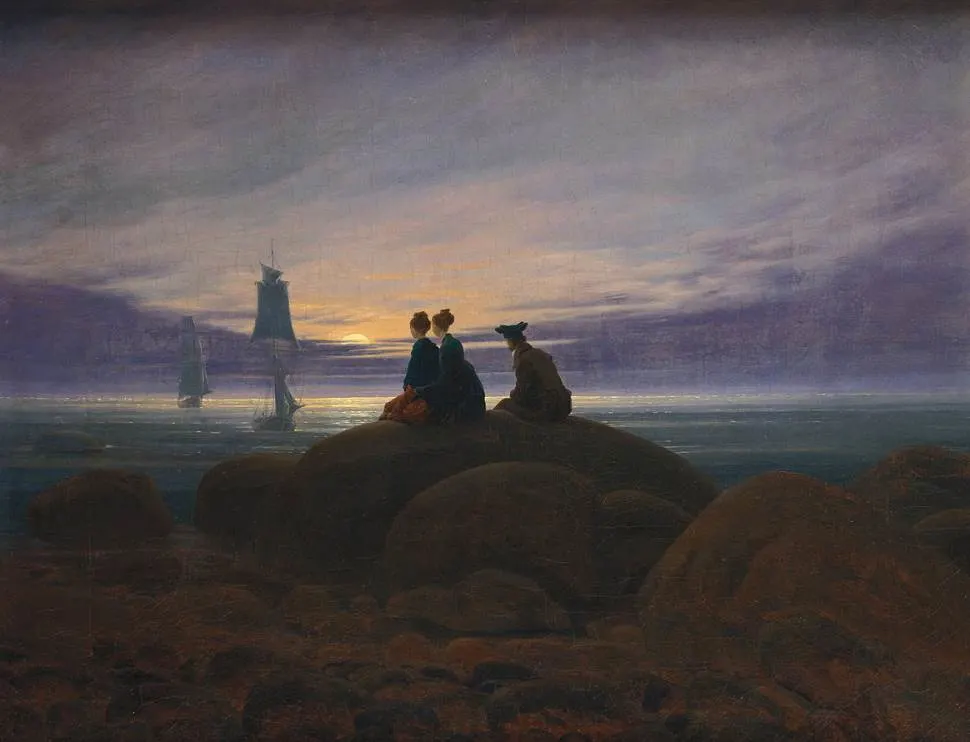Amazing landscapes and contemplative figures standing in awe of nature. This is what describes the most famous paintings by this renowned German artist.
Caspar David Friedrich (1774-1840) was born in the city of Greifswald in modern-day Germany. At the time, it was part of Swedish Pomerania.
He studied at the prestigious Art Academy of Copenhagen and moved to Dresden in 1798 where he settled permanently.
He did travel back to his home city frequently and was often inspired by the surrounding landscape of his home region to produce Romantic paintings.
This was a period that the Romantic era emerged and Friedrich is often described as one of the most influential Romantic artists of his generation.
Let’s take a closer look at some of the most famous paintings by Caspar David Friedrich so you can learn all about this intriguing artist.
1. Wanderer Above the Sea Fog
- Date created: 1818
- Dimensions: 94.8 × 74.8 centimeters (37.3 × 29.4 inches)
- Location: Hamburger Kunsthalle, Hamburg, Germany
Wanderer Above the Sea Fog is a painting that defines the oeuvre of Caspar David Friedrich. It depicts a man standing on top of a rocky outcrop with his back facing the viewer while overlooking the magnificent foggy landscape. It’s the most emblematic Romantic painting ever produced.
There’s a name for a figure who is seen from behind. This is called “Rückenfigur” or “Rear-Facing figure” and it’s an element often used by the artist. The man facing the viewer is wearing a traditional German outfit which was banned by the German Confederation in 1819, a year after this painting was completed.
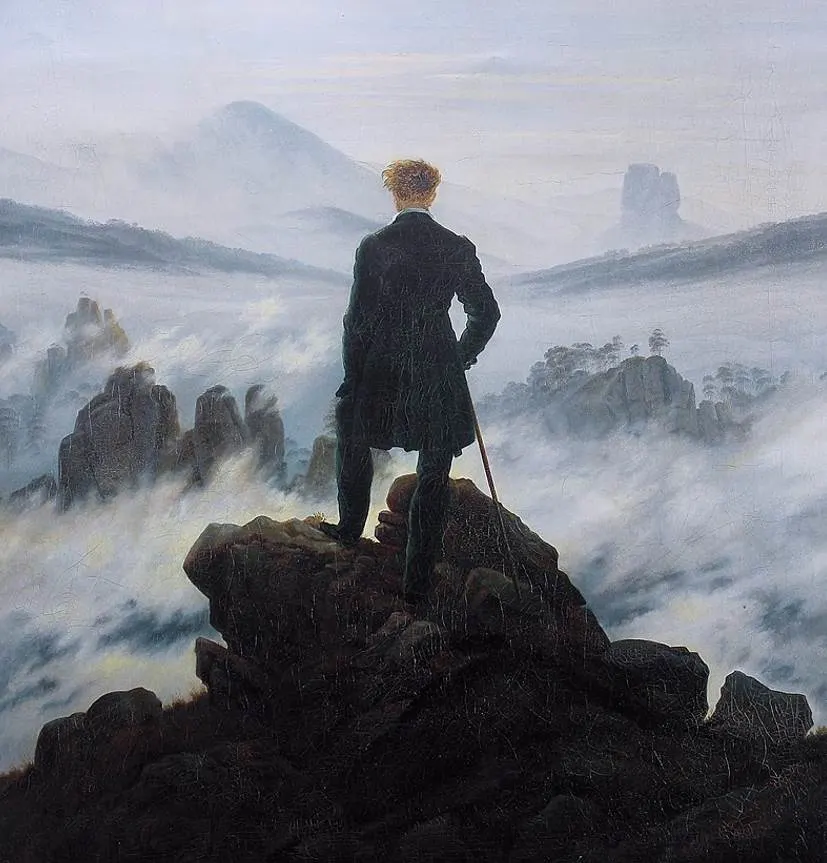
2. The Monk by the Sea
- Date created: 1808-1810
- Dimensions: 110 × 171.5 centimeters (43 × 67.5 inches)
- Location: Alte Nationalgalerie, Berlin, Germany
The Monk by the Sea is an intriguing painting by Freidrich that is dominated by a seascape in combination with an extremely gloomy sky. We can distinguish a figure in the foreground who appears to be a monk based on the long garment that he is wearing.

This painting can be described as an allegory of the vastness of nature, a notion emphasized by the fact that the monk is barely visible. Although it was heavily criticized by contemporary art critics, it’s one of the first major works by Friedrich that earned him widespread attention.

3. The Abbey in the Oakwood
- Date created: 1809-1810
- Dimensions: 110 × 171 centimeters (43.3 × 67.3 inches)
- Location: Alte Nationalgalerie, Berlin, Germany
The Abbey in the Oakwood was completed around the same time as The Monk by the Sea and that’s because it’s an adjoining painting. Both works were exhibited for the first time at an exhibition of the Prussian Academy of Arts in 1810 and this painting was hung beneath the Monk painting.
What’s fascinating about both paintings is that despite the lack of positive reviews, they still did draw the attention of the Prussian King Frederick Wilhelm III. He bought the paintings shortly after this event was concluded for his collection. Today, they both hang side by side at the Alte Nationalgalerie on Museum Island in Berlin.
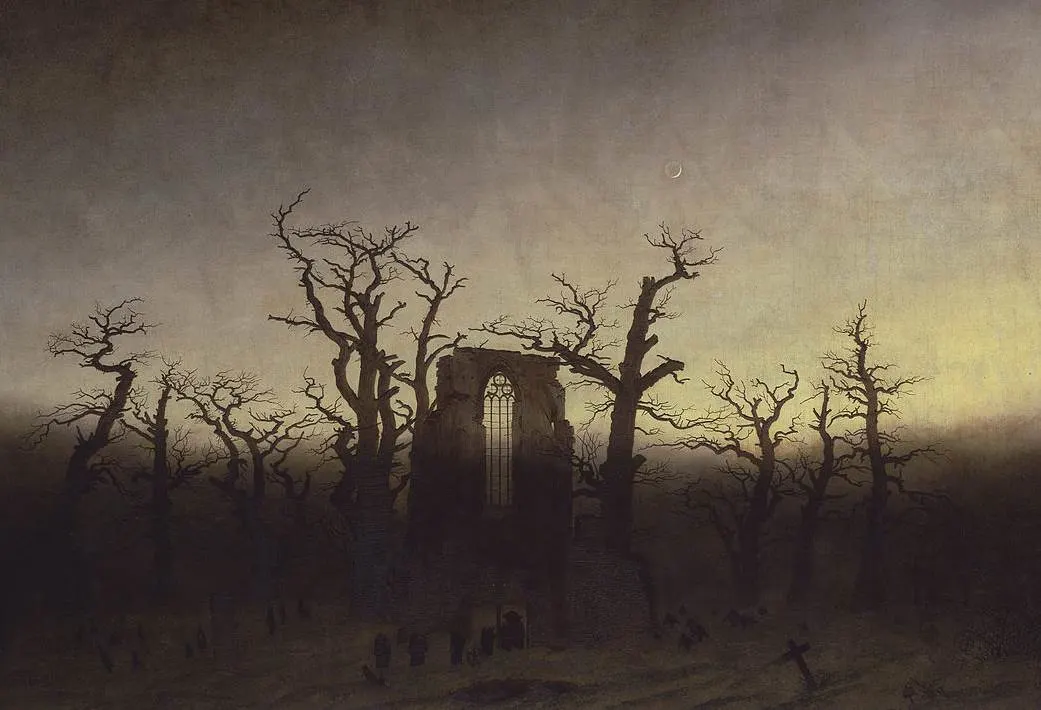
4. Cross in the Mountains
- Date created: 1807-1808
- Dimensions: 115 × 110 centimeters (45.2 × 43.3 inches)
- Location: Galerie Neue Meister, Belin, Germany
Cross in the Mountains is also known as the Tetschen Altar and is a remarkable painting in the oeuvre of Caspar David Friedrich. It was the first major commission for the aspiring artist and it instantly became a very controversial one as well.
Freidrich incorporated the Christian symbol of the cross in a landscape, the first time in history that this had been done. Christian art and history paintings were still considered to be the highest form of art at the time while landscapes were considered to be pretty ordinary. This made the combination strange for contemporary viewers.

5. The Stages of Life
- Date created: 1835
- Dimensions: 72.5 × 94 centimeters (28.5 × 37 inches)
- Location: Museum der Bildenden Künste, Leipzig, Germany
The Stages of Life is a painting that Freidrich completed during the final decade of his life and it can be described as one of his most ambiguous ones. In the foreground, we can see an old man with his back facing the viewer who is walking toward two adults and two children.
The scene takes place in an elevated position overlooking a harbor and we can see 5 ships in the background; These are allegorical representations of the 5 people in the foreground. Freidrich depicted a real location called “Utkiek” which is located near his home city of Greifswald.
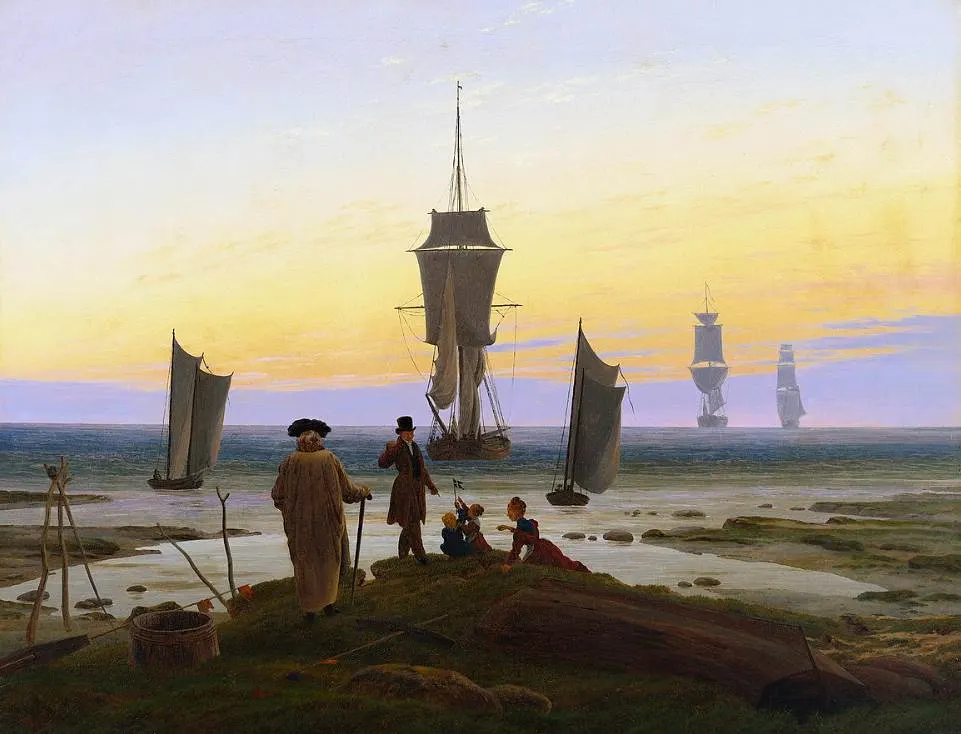
6. Woman at a Window
- Date created: 1822
- Dimensions: 44 × 37 centimeters (17 × 15 inches)
- Location: Alte Nationalgalerie, Berlin, Germany
Woman at a Window is one of the few famous paintings by Caspar David Friedrich that depict an interior scene. We can see the back of a woman who is looking through an opened window. The mast that appears makes us assume that a ship is passing nearby.
The depicted woman is the artist’s wife Caroline Bommer whom he married just 4 years before completing this painting in 1818. The interior space has been identified as Friedrich’s studio in Dresden which was overlooking the River Elbe.
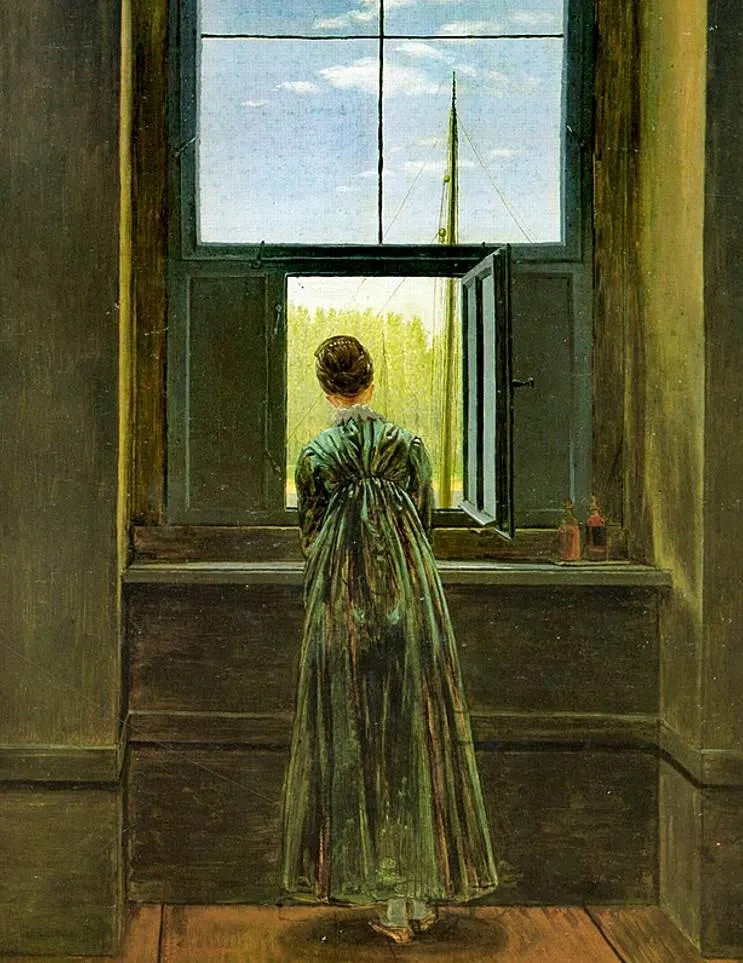
7. The Sea of Ice
- Date created: 1823-1824
- Dimensions: 96.7 × 126.9 centimeters (38 × 49.9 inches)
- Location: Hamburger Kunsthalle, Hamburg, Germany
The Sea of Ice is a fascinating painting by Friedrich that depicts a shipwreck in the Arctic Sea. We know it depicts this sea because it was originally titled “The Polar Sea.” It was exhibited at the Prague Academy Exhibition in 1824 with the title “An Idealized Scene of an Arctic Sea.”
This complex painting wasn’t appreciated for the remarkable work of art it was at the time of the exhibition and it’s one of the many paintings that remained unsold. The artist kept onto it until he passed away in 1840. Today, it’s considered to be one of his most influential masterpieces.
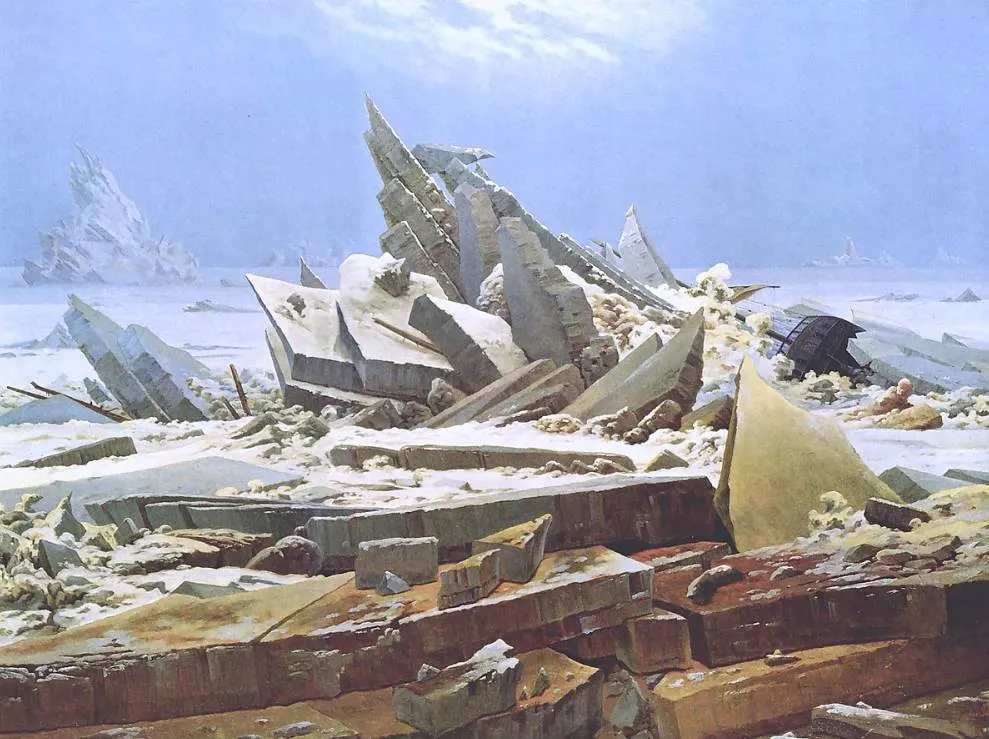
8. Chalk Cliffs on Rügen
- Date created: 1818
- Dimensions: 90.5 × 71 centimeters (35.6 × 27.9 inches)
- Location: Kunst Museum Winterthur – Reinhart am Stadtgarten, Winterthur, Switzerland
Chalk Cliffs on Rügen is a painting that Caspar David Friedrich completed the year that he married Carlone Bommer. She was twenty years younger than the artist and they went on an extended honeymoon visiting family and friends in both Neubrandenburg and Greifswald.
This painting was inspired by an excursion that the couple undertook together with Friedrich’s brother Christian on the island of Rügen. This island is situated just north of Greifswald and features distinctive chalk cliffs that the artist often featured in his works. This painting is believed to be a celebration of the couple’s union.
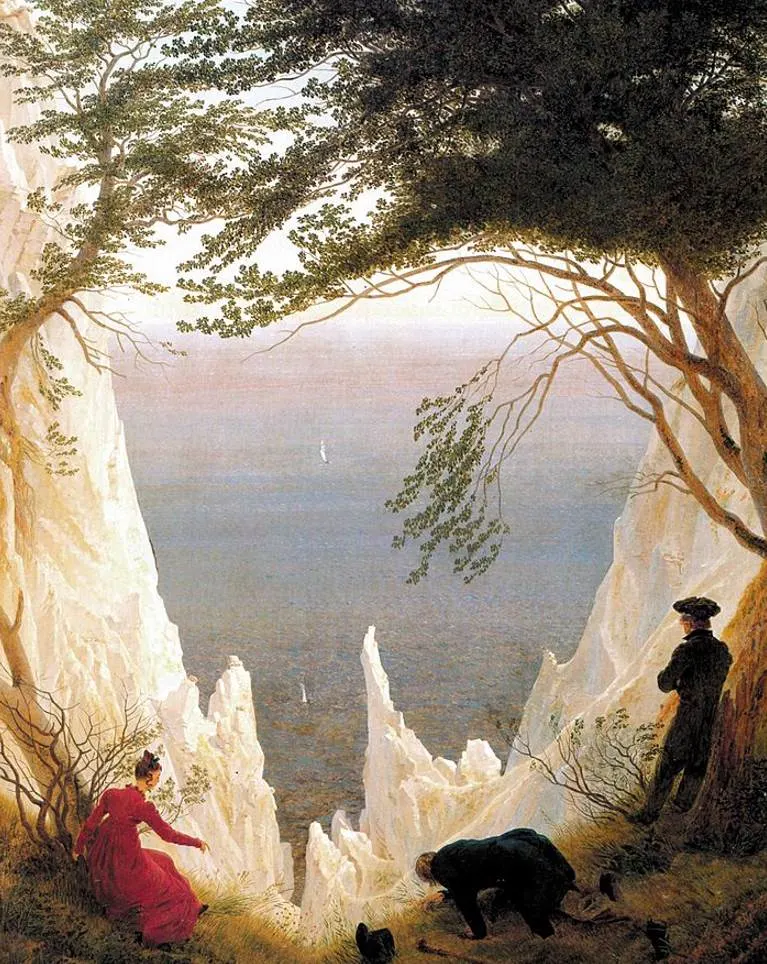
9. The Lonely Tree
- Date created: 1822
- Dimensions: 55 x 71 centimeters (21.6 x 27.9 inches)
- Location: Alte Nationalgalerie, Berlin, Germany
The Lonely Tree is also known as “The Solitary Tree” and is a painting that is dominated by a solitary oak tree in the foreground. The ancient tree seems heavily damaged and its dark branches make it stand out in the otherwise luscious landscape.
The painting was commissioned by a rich German banker and art collector named Joachim Heinrich Wilhelm Wagener (1782-1861). His collection formed the start of the collection of the Alte Nationalgalerie in Berlin where the painting is still on display today.
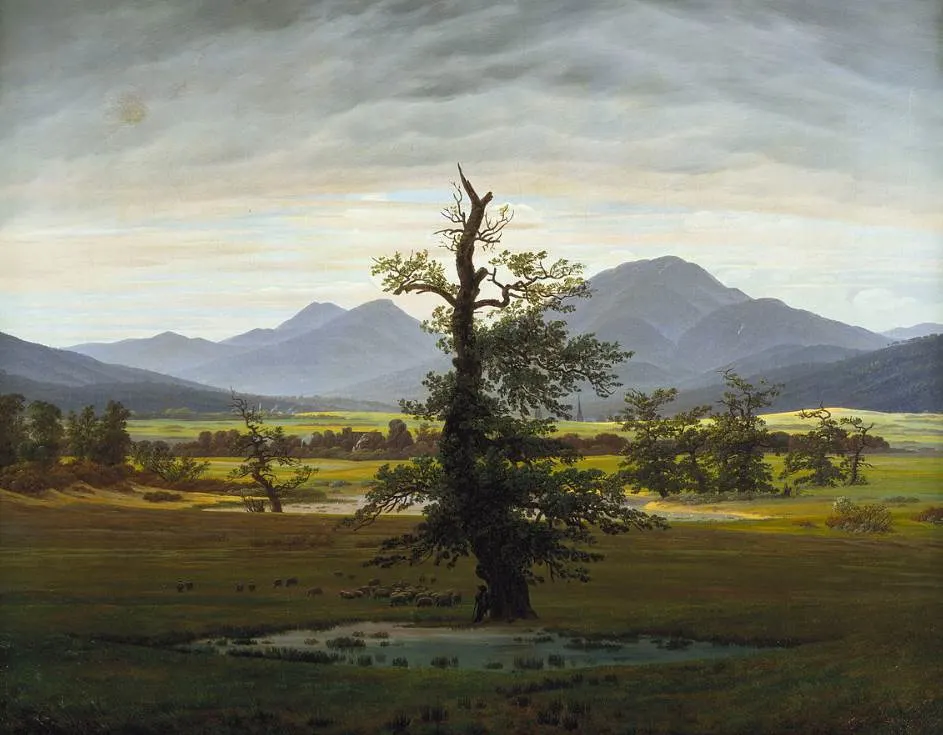
10. Moonrise Over the Sea
- Date created: 1822
- Dimensions: 55 × 71 centimeters (22 × 28 inches)
- Location: Alte Nationalgalerie, Berlin, Germany
Moonrise over the Sea is also known as Moonrise by the Sea and was the second painting that Wagener commissioner from Freidrich n the early 1820s. It depicts three, people, two women with a man behind them who are sitting on a rock as they overlook the magnificent sea in front of them.
The moon is rising above the clouds in the distance which provides the fascinating atmosphere of this seascape. Although it has been hard to confirm, some art historians have suggested that it depicts the beach Stubbenkammer near the island of Rügen.
